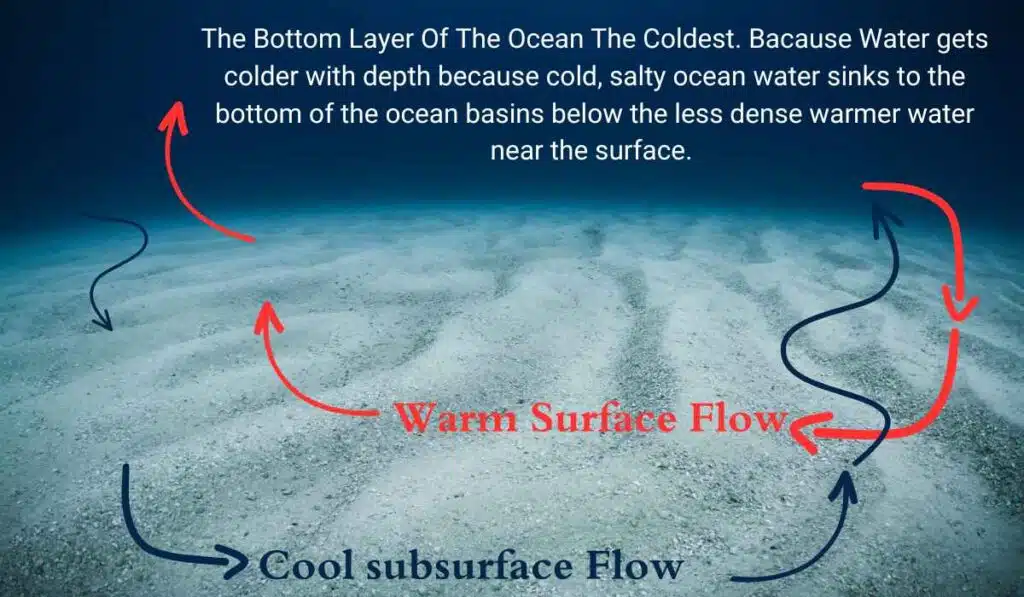Why Is Bottom Layer Of Ocean Coldest?
The bottom layer of the ocean the coldest due to a process called thermohaline circulation. This circulation is driven by temperature and salinity differences throughout the ocean.

When surface water cools, it becomes denser and sinks to the bottom. It allowing warmer water to rise in its place. This is known as deep-water formation.
The colder & denser water sinks below the less dense, warmer water near the surface. The combination of sinking cold, salty water and wind-driven flow of warm water creates a complex ocean circulation pattern known as the ‘global conveyor belt.’
Why Is Bottom Layer Of Ocean Cold?
The bottom layer of the ocean is cold because cold water is denser than warm water. When water cools, its molecules pack closer together, increasing its density. The coldest ocean water will sink to the bottom, even if it is salty.
Here are the reasons why bottom layer of ocean is cold;
1. Thermoclines
Bodies of water will often stratify into layers with varying temperatures called thermoclines. Thermoclines are distinct boundaries between a layer of water with one temperature and another.
Thermoclines typically become colder with increased distance from the surface.
2. Density and Ocean Circulation
Cold water sinks, while warm water rises. This process of density-driven circulation is called thermohaline circulation.
Thermohaline circulation is a global pattern of ocean circulation that moves water around the world. It is driven by the sinking of cold, salty water at the bottom of the ocean.
3. Global Conveyor Belt
The sinking and transport of cold, salty water at depth combined with the wind-driven flow of warm water at the surface creates a complex pattern of ocean circulation called the ‘global conveyor belt’.
The global conveyor belt is a major driver of climate change. It transports heat from the tropics to the poles, which helps to moderate global temperatures.



Leave a Reply